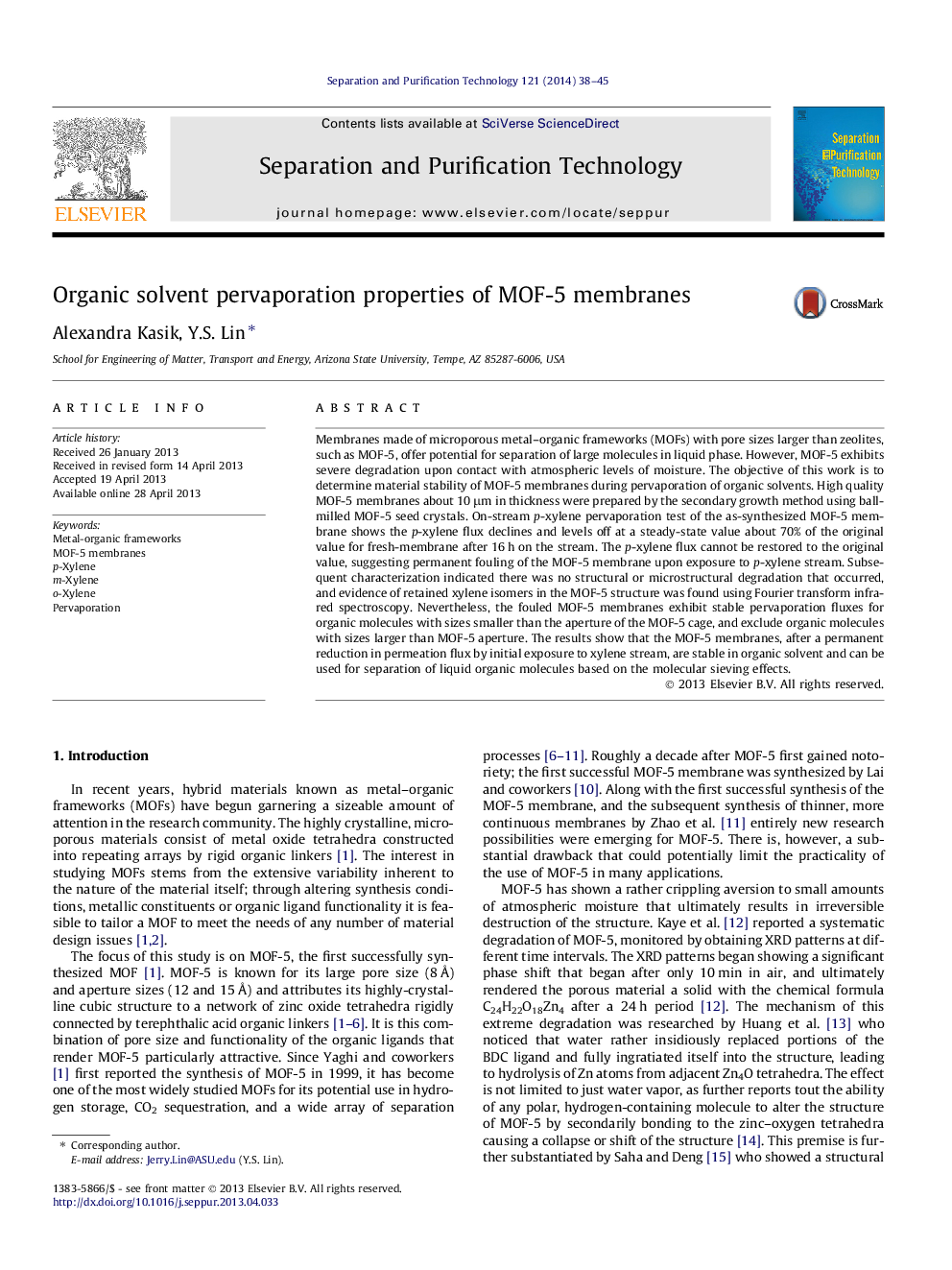| Article ID | Journal | Published Year | Pages | File Type |
|---|---|---|---|---|
| 641419 | Separation and Purification Technology | 2014 | 8 Pages |
•High quality, continuous MOF-5 membranes were created via solvothermal synthesis.•24-h pervaporation of p-xylene through MOF-5 showed flux decrease with time.•Flux equilibrated at a value 70% of the initial flux, and could not be recovered.•SEM and XRD data indicated the structure was not degraded following pervaporation.•MOF-5 shows an ideal separation factor of 2.2 and 2.0 for p- over o- and m-xylene.
Membranes made of microporous metal–organic frameworks (MOFs) with pore sizes larger than zeolites, such as MOF-5, offer potential for separation of large molecules in liquid phase. However, MOF-5 exhibits severe degradation upon contact with atmospheric levels of moisture. The objective of this work is to determine material stability of MOF-5 membranes during pervaporation of organic solvents. High quality MOF-5 membranes about 10 μm in thickness were prepared by the secondary growth method using ball-milled MOF-5 seed crystals. On-stream p-xylene pervaporation test of the as-synthesized MOF-5 membrane shows the p-xylene flux declines and levels off at a steady-state value about 70% of the original value for fresh-membrane after 16 h on the stream. The p-xylene flux cannot be restored to the original value, suggesting permanent fouling of the MOF-5 membrane upon exposure to p-xylene stream. Subsequent characterization indicated there was no structural or microstructural degradation that occurred, and evidence of retained xylene isomers in the MOF-5 structure was found using Fourier transform infrared spectroscopy. Nevertheless, the fouled MOF-5 membranes exhibit stable pervaporation fluxes for organic molecules with sizes smaller than the aperture of the MOF-5 cage, and exclude organic molecules with sizes larger than MOF-5 aperture. The results show that the MOF-5 membranes, after a permanent reduction in permeation flux by initial exposure to xylene stream, are stable in organic solvent and can be used for separation of liquid organic molecules based on the molecular sieving effects.
Graphical abstractFigure optionsDownload full-size imageDownload as PowerPoint slide
